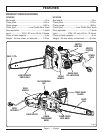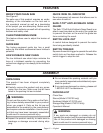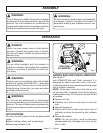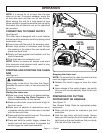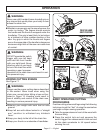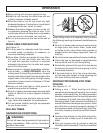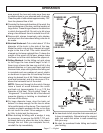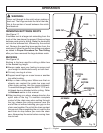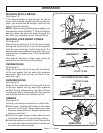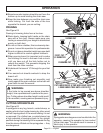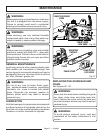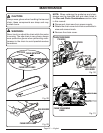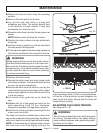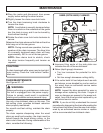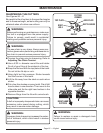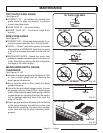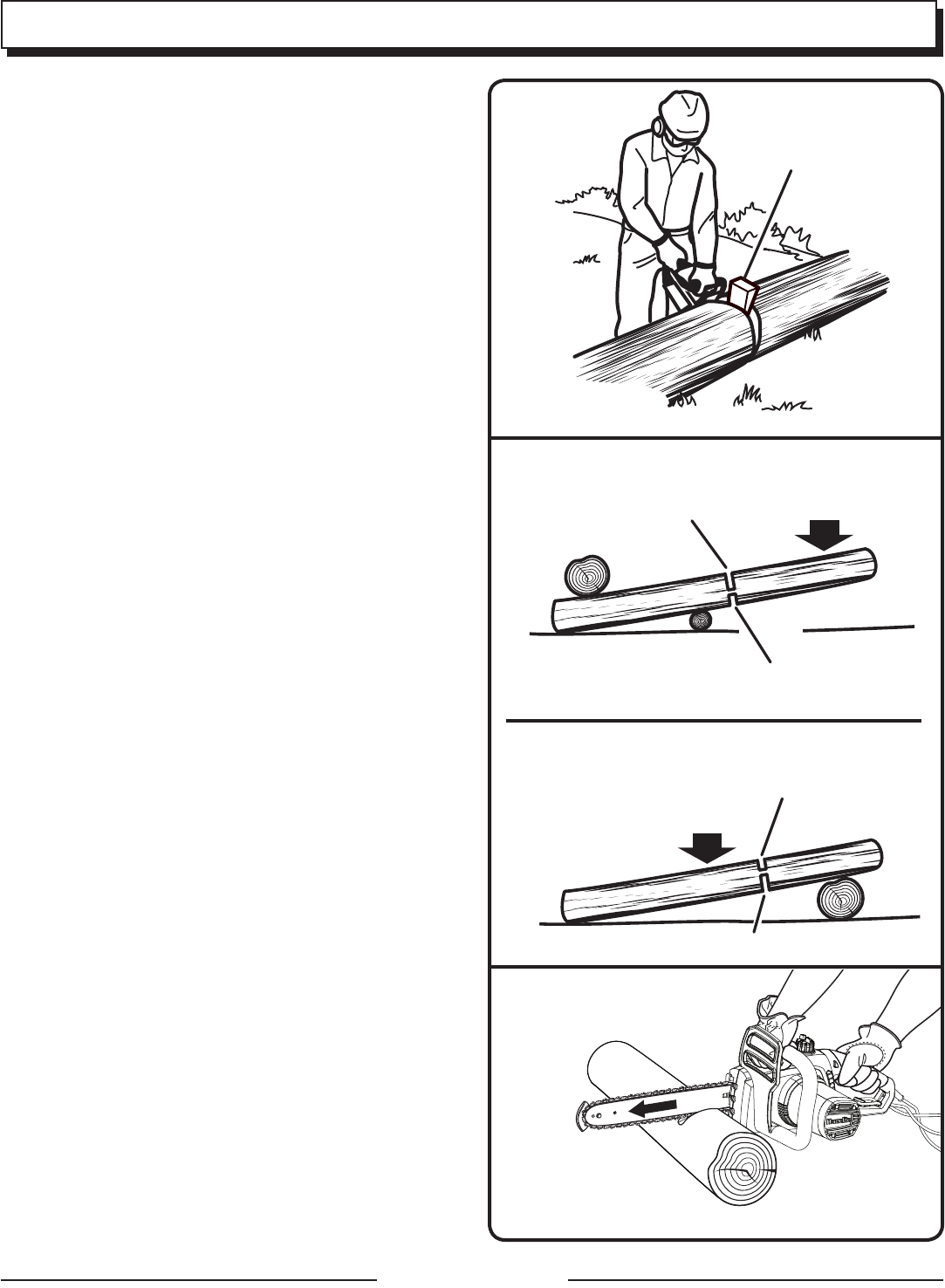
Page 19 — English
OPERATION
BUCKING WITH A WEDGE
See Figure 19.
If the wood diameter is large enough for you to
insert a soft bucking wedge without touching the
chain, you should use the wedge to hold the cut
open to prevent pinching.
NOTE: When bucking or felling with a wedge, you
may need to remove the SAFE-T-TIP anti-kickback
device to allow the bar to be drawn through the
cut. After you complete the cut, reinstall the tip.
BUCKING LOGS UNDER STRESS
See Figure 20.
Make the first bucking cut 1/3 of the way through
the log and finish with a 2/3 cut on the opposite
side. As you cut the log, it will tend to bend. The
saw can become pinched or hung in the log if you
make the first cut deeper than 1/3 of the diameter
of the log.
Give special attention to logs under stress to
prevent the bar and chain from pinching.
OVERBUCKING
See Figure 21.
Begin on the top side of the log with the bottom
of the saw against the log; exert light pressure
downward. Note that the saw will tend to pull
away from you.
UNDERBUCKING
See Figure 22.
Begin on the under side of the log with the top
of the saw against the log; exert light pressure
upward. During underbucking, the saw will tend
to push back at you. Be prepared for this reaction
and hold the saw firmly to maintain control.
LIMBING
See Figure 23.
Limbing is removing branches from a fallen tree.
Work slowly, keeping both hands on the chain
saw with a firm grip. Always make sure your
footing is secure and your weight is distributed
evenly on both feet.
Leave the larger support limbs under the tree
to keep the tree off the ground while cutting.
Limbs should be cut one at a time. Remove the
cut limbs from the work area often to help keep
the work area clean and safe.
WEDGE
LOAD
FINISHING CUT
1ST CUT 1/3 DIA
LOG SUPPORTED AT ONE END
LOG SUPPORTED AT BOTH ENDS
FINISHING CUT
1ST CUT 1/3 DIA
LOAD
OVERBUCKING
Fig. 19
Fig. 20
Fig. 21



